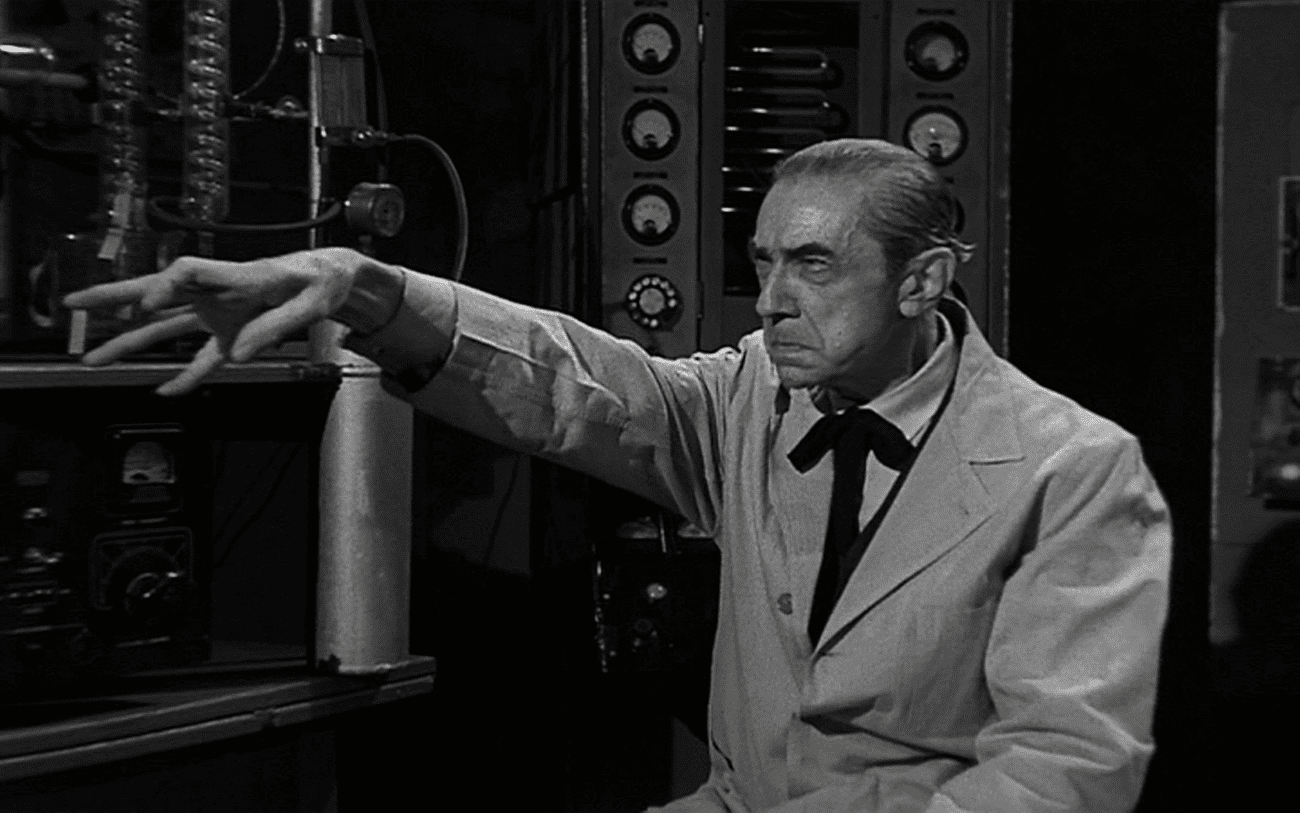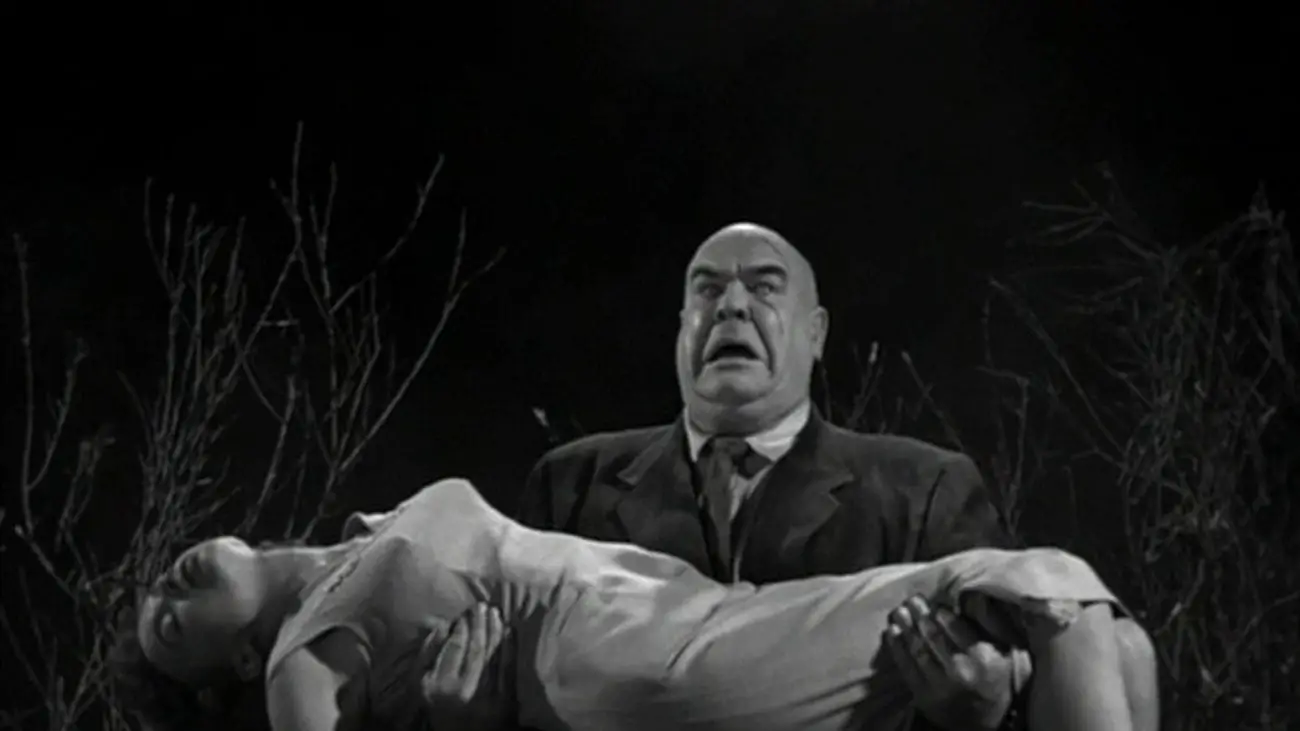When Edward D. Wood Jr. shuffled off this mortal coil on December 10, 1978, due to a heart attack brought about from years of alcohol abuse, his passing hardly made a ripple in Hollywood. Nobody rushed to talk to the press. Nobody felt the urge to praise him from the rafters. There was no full-page obituary for him taken out in Variety, and outside of his immediate family and friends, nobody shed a tear. This was because his career was viewed as a complete and utter failure, and Tinseltown hates nothing more than having to admit it’s not the Dream Factory it makes itself out to be.
Yet, here was a man who was involved in the making of 45 films when he was alive. He had been a director, writer, editor, actor, and occasional stuntman and was active within the industry right up to July 1977 when he served as Assistant Director on the movie Hot Ice. So was he the total and utter hack that they painted him out to be? Surely he can’t have been that bad, could he?

Edward Davis Wood, Jr. was born in Poughkeepsie, New York on October 10, 1924. His father was a member of the U.S Postal Service, and before Ed was born, his family had moved around as when Sr. Wood was required to, but they finally settled when his mother Lillian fell pregnant. Having desperately wanted a daughter, the fact that Ed was born a boy could’ve been a deal-breaker between the two, but instead of driving a wedge through the family, Lillian adapted and took to dressing Ed as a girl until his twelfth birthday. This would have a huge effect on Ed and would lead to him becoming a transvestite as he grew up.
In fact, so comfortable was he in women’s clothes that Rudolph Grey claimed in his 1992 biography, Nightmare of Ecstasy: Life and Art of Edward D. Wood, that Wood had gone into battle while serving as a Marine during the Pacific War in ladies’ underwear. It should be noted, however, that this was disputed by Adam Barkman and Antonio Sanna in their 2017 book, A Critical Companion to Tim Burton, that this would’ve been impossible as the nature of the close quarters that the soldiers were forced to live in during this time…
…precludes any possibility of concealing so volatile a secret.
As he grew up, Ed became an avid collector of the pulp fiction comics of the time and would regularly skip school to spend his days at his local cinema, watching westerns and horror. It was here that he would get his first experience of Bela Lugosi, and the actor left a huge impression on the young lad, one that would eventually lead to a working relationship between the two.
It was on his birthday in 1936 that he’d be introduced to the piece of equipment that would go onto consume his life as he was given a Kodak Cine Special camera as a present. Ed took to it like a fish to water and even managed to get some footage of the Hindenburg as it flew over the Hudson River on the way to its date with disaster. Yet, the young Ed seemed directionless and couldn’t seem to settle on what he really wanted to do with his life. So after Pearl Harbour happened, Ed enlisted. He claimed that he saw a ton of action during this time, including having his teeth knocked out by a Japanese soldier who cracked him in the face with the butt of his rifle, but none of it was true. It has been reported that, outside of clearing bodies in the aftermath of the Battle of Tarawa, he was tied to a desk doing clerical work for the duration of his time in the army.
After he was discharged, he eventually decided that Hollywood was the place for him, so he packed up and moved out west in 1947. For six years, he made a living by writing scripts, directing failed TV pilots, and throwing himself off of buildings in Vincent Price movies until in 1953 he got his ‘big break’ with Glen Or Glenda. It was Wood’s first experience of working with a producer, and it wasn’t a pleasant one. George Weiss was a man who liked to make as much money for as little layout as possible, so when Ed gave him a movie that was short on runtime and more a study on the trials a cross-dressing man faced in everyday life, Weiss decided to pad it out with scenes of half-naked women, bondage and whipping. Having watched the movie on numerous occasions, there really is no other reason for these parts being added, other than to titillate 1950s America, but if you ignore them, then the story is Ed’s way of trying to gain acceptance for his transvestism within an industry and a country that would’ve liked to burn him at the stake for wearing women’s clothes.
It was also during this period that he met Bela Lugosi. In Tim Burton‘s treatment of the subject, you’re led to believe that Lugosi was a down on his luck actor that was addicted to morphine, with zero friends, and though parts of this are true, Lugosi had a monkey on his back the size of King Kong, he was still getting work and had Frank Sinatra of all people in his corner. When he went into rehab, Ol’ Blue Eyes sent him a cheque for $1,000 and a note that read:
Thank you so much for many, many wonderful hours of entertainment.
Wood and Lugosi’s friendship would see them work together on three movies. The aforementioned Glen Or Glenda, 1955’s Bride Of The Monster, and 1959’s Plan 9 From Outer Space, all of which are now rightly considered cult classics. It may seem strange of me to not go into a deep dive on Plan 9 From Outer Space in a piece about Ed Wood, but this is because I’m in the process of writing a separate piece on it for publication in a few weeks’ time, and if I get into it here, then there’s no point me doing that, now is there? Let’s just say that along with the other two I’ve just mentioned, it’s part of a trinity of films that are quintessential Ed Wood and should be required watching for anyone who considers themselves a fan of the man.

It was also during this time that Ed Wood showed himself to be a fantastic snake oil salesman as he managed to convince the Baptist Church Of Beverly Hills to cough up the money for his masterpiece, and it was a trait that would see him manage to carry on creating movies right up until his death. Sadly though, by 1965 he was struggling to find work in any genre that wasn’t erotica and then eventually into hardcore pornography, and these would be the productions that would fill up the vast majority of his remaining 13 years on the planet. This is a shame as he deserved much better than that.
If you watch any of his features up to 1965’s Orgy Of The Dead, where Wood was screenwriter and production manager and was the major turning point in his career, there is a lot to be admired about them. Admittedly, they aren’t the best shot or acted, with performers reading lines off of paper attached to items on set and scenes full of stock footage and special effects that Stevie Wonder could’ve done better, but there is a genuine love for his art that shines through. It doesn’t matter that he never had the technical ability to back up his ambitious plans or the money to pull it off, Ed Wood went into each film as if he was making Citizen Kane, and you have to respect him for it. He was the definition of ‘Do It Yourself’, a self-made man who really shouldn’t have succeeded in the cut-throat world of Hollywood, but for a while managed to—even if he never got the A-list movies he was always craving.
What he didn’t deserve was to be forgotten, and he would’ve remained just a footnote in film history if it hadn’t been for Harry and Michael Medved’s 1980 book, The Golden Turkey Awards. It was this publication that looked at the very worst that Hollywood had ever had to offer, and within its hallowed pages it voted Ed Wood ‘The Worst Director Of All Time’ and Plan 9 From Outer Space as ‘The Worst Movie Ever Made’, and that was all it took. Almost overnight, Ed Wood became a must-see for a whole new generation of fans raised on late-night B-Movie marathons, and since then he has always held a special place in the hearts of those of us who love as much trash on their screens as they can find.



